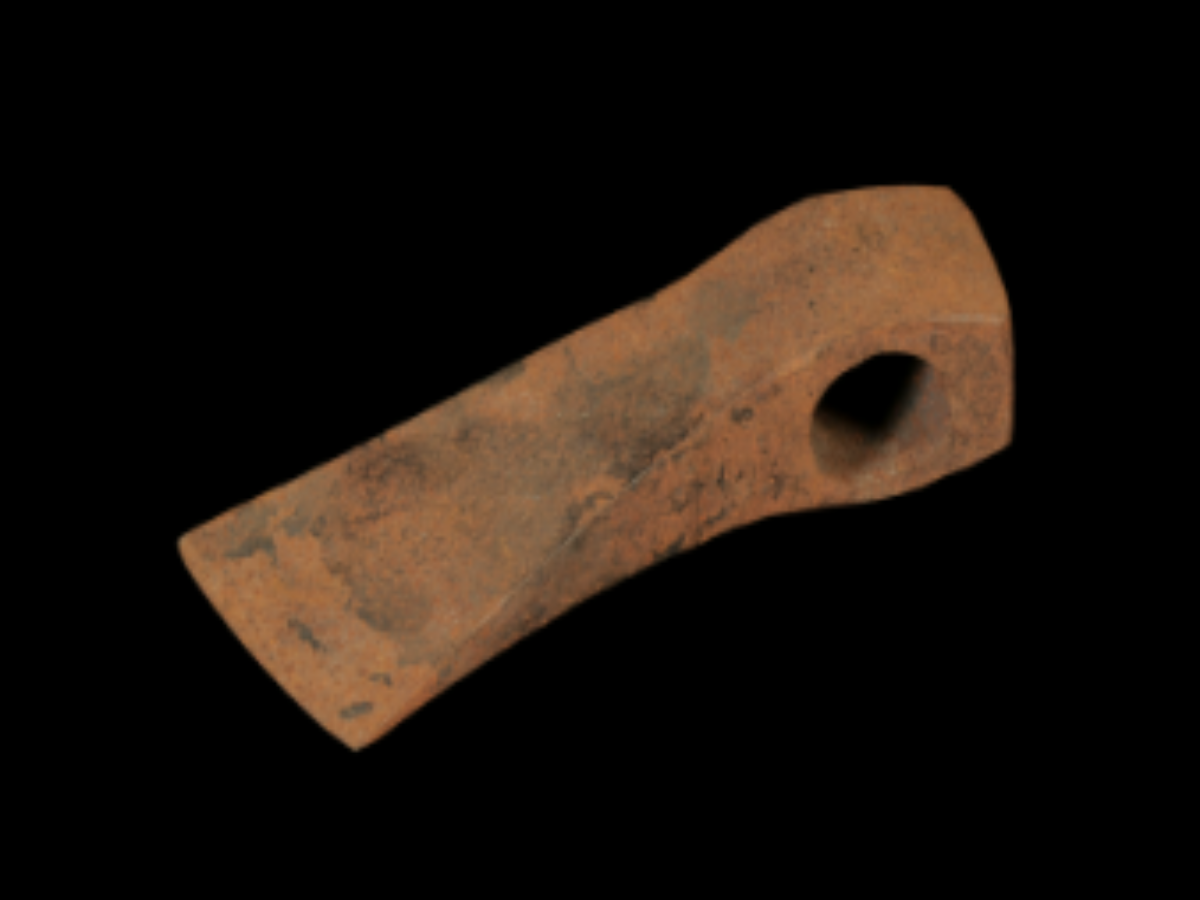State
Tribe Name
Art Type
short description
This is a traditional iron axe, supposedly from the Santals, and it is an important commodity not only for tribal livelihood but also for craftsmanship and identity.
The Santal (or Santhal) belongs to one of the large sections among the tribes of India. Some dark regions they have inhabited include Jharkhand, West Bengal, Odisha, and Bihar. Their tools and weapons are usually beyond utilitarian ones as they also tend to feature a social and symbolic meaning.
The Santal (or Santhal) belongs to one of the large sections among the tribes of India. Some dark regions they have inhabited include Jharkhand, West Bengal, Odisha, and Bihar. Their tools and weapons are usually beyond utilitarian ones as they also tend to feature a social and symbolic meaning.
Thumbnail

Filter Postion
Left
Filter Background
Off
Theme
Filter Header Image

content
Image

description
This is a traditional iron axe, supposedly from the Santals, and it is an important commodity not only for tribal livelihood but also for craftsmanship and identity.
The Santal (or Santhal) belongs to one of the large sections among the tribes of India. Some dark regions they have inhabited include Jharkhand, West Bengal, Odisha, and Bihar. Their tools and weapons are usually beyond utilitarian ones as they also tend to feature a social and symbolic meaning.
The abovementioned axe is made of an iron head but has a straight-edged blade, is square-shaped at the butt, and has a round eye with a bulbous outer surface – the very visible signature of a traditional Santal blacksmith. Such axes used to find their utility in agriculture, hunting, and as tools of self-defense. Apart from serving its functional purpose, the axe also makes its famous way into Santal folklore and rituals manifesting strength, protection, and the community's deep bond with nature.
The craftsmanship had its wings in millenary indigenous metallurgy knowledge. The majority of traditional Santals depend on village blacksmiths, or lohar, who would forge instruments with local resources and traditional methods (Roy, 1912). These Artefacts are collected in institutional settings such as the Indian Museum, Kolkata, as cultural markers for future gener
The Santal (or Santhal) belongs to one of the large sections among the tribes of India. Some dark regions they have inhabited include Jharkhand, West Bengal, Odisha, and Bihar. Their tools and weapons are usually beyond utilitarian ones as they also tend to feature a social and symbolic meaning.
The abovementioned axe is made of an iron head but has a straight-edged blade, is square-shaped at the butt, and has a round eye with a bulbous outer surface – the very visible signature of a traditional Santal blacksmith. Such axes used to find their utility in agriculture, hunting, and as tools of self-defense. Apart from serving its functional purpose, the axe also makes its famous way into Santal folklore and rituals manifesting strength, protection, and the community's deep bond with nature.
The craftsmanship had its wings in millenary indigenous metallurgy knowledge. The majority of traditional Santals depend on village blacksmiths, or lohar, who would forge instruments with local resources and traditional methods (Roy, 1912). These Artefacts are collected in institutional settings such as the Indian Museum, Kolkata, as cultural markers for future gener
Image Mode
landscape
promoted
On
Verified
Off
